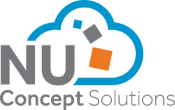Learn how your organisation can leverage the power of AI to drive business transformation.
Artificial intelligence (AI) isn’t only a tech upgrade. It’s a game-changer in business transformation. It can transform an organisation for long-term success by freeing staff time, creating opportunities to upskill, mapping skills and driving innovation. This blog explores the key areas where AI will create efficiencies and how to turn them into competitive advantage.
The growing AI divide
Generative AI is already reshaping how people work, creating a potential divide between businesses that equip employees with these tools and those that fail to adapt.
How much time are we talking?
AI offers several benefits, including speed, efficiency, and enhanced capabilities. In PwC’s 28th Annual Global CEO Survey, Over half of CEOs say that GenAI has resulted in efficiencies in how employees use their time. Around one-third report increased revenue and profitability. A survey of employees using AI found that 37% report time savings of five to ten hours per week and 11% save more than 10 hours per week.
How AI is transforming business in 2025
AI is transforming the business landscape by automating routine tasks. Many businesses use AI to drive down bottom-line costs by doing things quicker or more frequently than before. The potential for time and cost savings is immense. One advantage is that it enables employees to focus on higher-value activities. Yet, Al does more than help workers do the old things faster. It opens the door to new business models and ways of creating value. Many organisations are still in the initial stages of capitalising on AI to boost efficiency. This year, business transformation teams can capitalise on the gains AI offers to help drive it. The implications for business are massive.
Starting your transformation journey
Rather than viewing AI as a tool for eliminating jobs, shift your mindset towards the future. AI isn’t about cutting roles; it’s about unlocking resources that empower transformation and enable your business to grow.
Ensuring the right people drive AI adoption
Business leaders must ensure they have the right talent, align people with the right roles, and provide clear direction on where AI can take the organisation.
Competitive advantage and innovation
- Process automation
AI streamlines repetitive tasks, reducing errors and freeing employees for higher-value work. From data entry to customer support, automation enhances efficiency and cuts costs. By automating routine administrative processes, businesses can reduce inefficiencies and operational costs. Hiring managers spend less time on admin, enabling a stronger focus on workforce strategy and staff engagement.
- Data-driven decision-making
AI analyses vast data, identifying trends and insights that inform decisions. Businesses can predict market shifts, optimise operations, and personalise customer experiences. Instead of relying on intuition or outdated reports, organisations see talent gaps, market demand, and workforce performance. This helps IT hiring managers improve skills development, resource allocation, and recruitment decisions.
- Mapping and identifying skills gaps
AI helps organisations map skills gaps by analysing workforce capabilities and identifying areas for improvement. As you define your transformation goals, skills mapping can identify workers with the skills needed to help you achieve these. Filling these gaps is crucial for long-term growth. It ensures employees remain adaptable and competitive. With AI-driven data analysis, managers can pinpoint training and development needs. This gives a more strategic approach to upskilling. AI can help you maximise the potential of employees’ new free time. It could also connect employees to new business transformation projects. After mapping out your projects and the skills each project needs, you can target employees whose workload you want to reduce, to free them up for new projects.
- Upskilling employees
With AI streamlining tasks, employees can spend more time focusing on strategic initiatives. Managers should focus on training employees to meet evolving needs. Consider your business goals and how existing staff can contribute. Transformation often comes from within when employees are involved. Upskilling ensures they develop the right skills while retaining experienced staff who already understand the organisation.
- Driving innovation through AI
AI drives innovation by automating routine tasks, enabling teams to focus on creative and strategic work. Businesses can use AI to improve product development, including optimising designs with machine learning, or enhancing customer experience through personalised recommendations and AI-driven support. With employees freed up, teams can focus on innovation to secure a competitive edge. This could include:
- developing new products
- creating AI applications
- redesigning processes
- launching visionary business units
Achieving long-term success: future-proofing your organisation with AI
Transformation requires reinvention, and AI provides the speed and potential to evolve. AI supports long-term growth by enabling upskilling, skills mapping, and innovation, ensuring businesses adapt to demands. AI helps organisations stay competitive in a changing market by improving efficiency and unlocking opportunities. Upskilling, skills mapping, and AI innovation are key to business transformation. As AI reshapes industries, embracing it in 2025 will be essential for long-term success.
If you're looking to leverage the power of AI to gain a competitive advantage, NU Concept Solutions currently offers a free initial consultation with one of our many AI consultants to discuss how AI could be used to take your business forward.

